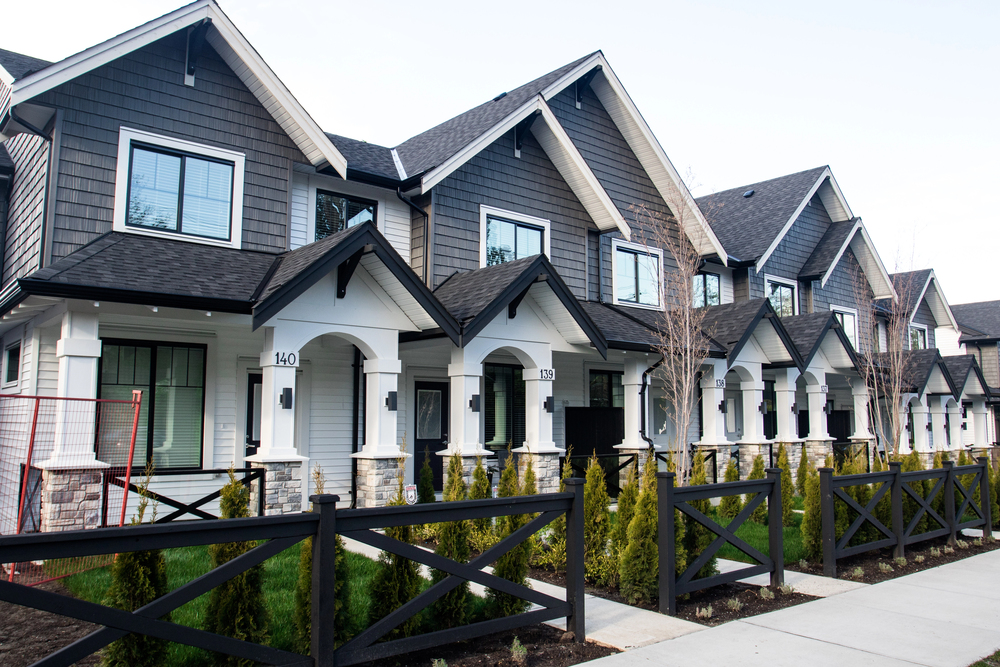According to national and local housing data, housing needs in Montgomery County and beyond are changing. Consequently, the Montgomery County Council is currently considering a set of recommendations from the County’s Planning Board that could shape the future of housing in County neighborhoods. These recommendations, developed by the Montgomery County Planning Department and conveyed to the Council from the Montgomery County Planning Board in June 2024, introduce potential zoning changes to expand housing options in specific residential areas.
What is Montgomery County’s Attainable Housing Strategies?
Montgomery County government’s Attainable Housing Strategies initiative began in March 2021 with the goal of creating more housing choices in Montgomery County, especially for “Missing Middle Housing.” Missing Middle Housing options, such as duplexes, triplexes, and quadplexes, offer multi-unit living that is compatible with the scale and look of traditional single-family homes.
The recommended changes fall into three development tiers:
- Small Scale Attainable Housing: This includes duplexes, triplexes, and quadplexes designed to blend into single-family neighborhoods by following similar setback, lot coverage, and height restrictions. This means multi-unit buildings could fit seamlessly into the current neighborhood aesthetic.
- Medium Scale Attainable Housing: Found along the County’s growth corridors, medium-scale housing includes three- to four-story stacked flats, small apartment buildings, and townhouses. These housing types would use a new “Attainable Housing Optional Method of Development” to cap their size, keeping them affordable and attainable.
- Large Scale Attainable Housing: For larger growth corridors, the proposal considers mixed-use buildings with live/work options or apartment buildings with four or more stories. These developments would undergo Council approval through master plans or a new “floating zone” process, allowing adjustments for specific areas without blanket zoning changes.
Why Is This Important?
Montgomery County’s diverse socio-economic population means that housing needs vary widely, but the data shows that the existing housing stock does not fully support this diversity and projected population growth. For many, purchasing a single-family home can be financially out of reach, while large apartment buildings might not suit many families’ housing needs.
The Attainable Housing Strategies are intended to address these needs, promoting not only affordability but also economic and demographic diversity in County neighborhoods. By providing more housing options, the County Council hopes to make Montgomery County a place where people from various economic backgrounds can live, work, and grow.
Community Feedback and Council Listening Sessions
In keeping with its commitment to public involvement, the Council held a series of listening sessions throughout the County’s five regional service areas and one virtual session. Council President Andrew Friedson and Montgomery Planning Director Jason Sartori encouraged residents to participate and provide feedback, which is to be shared with all Councilmembers as they review the recommendations.
What’s Next for the Attainable Housing Strategies?
At this stage, no legislation has been introduced to implement these recommendations. The Montgomery County Council’s Planning, Housing, and Parks (PHP) Committee received three briefings over the summer, and all Councilmembers will continue their review based on community feedback.
While some residents are enthusiastic about the increased housing options, others have expressed concerns about how these changes could impact neighborhood character, traffic, parking and resources. The Council’s approach is designed to address these concerns and find a balance between growth and preservation.
How Real Estate Developers Should be Prepared
For interested real estate developers, here are a few ways to can track information and be prepared for zoning changes and new legislation:
- Read the Full Report: The Planning Department’s Attainable Housing Strategies Report provides in-depth information about the proposed zoning modifications.
- Share Your Insight: Contact your Councilmembers to share the benefits of this action and provide support for the council to pass a law to allow these necessary changes. Click here for contact information and news updates.
- Stay Updated: Keep an eye on the Montgomery County Council’s website for updates on the status of these recommendations and future opportunities for public comment.
How MM&C Land Use & Development Attorneys Can Help
Sean Hughes is an attorney in Miller, Miller & Canby’s Land Use practice group. His career spans more than two decades of focus in land use, zoning and wireless telecommunications. The firm’s Land Use & Development practice concentrates on land use, zoning, subdivision and planning law in Montgomery County and the municipalities within the county. Our land use and real estate attorneys represent clients in many of the County’s planning and economic development initiatives. Our areas of expertise include zoning, special exceptions, conditional uses, building variances, sign variances, subdivision, master planning, building permit issuance, and administrative and real estate matters related to land development. We represent private real estate developers, non-profit entities and municipal corporations and agencies. Learn more about Miller, Miller & Canby’s Land Use and Zoning practice by clicking here or contact us at 301.762.5212.









Share this Article: